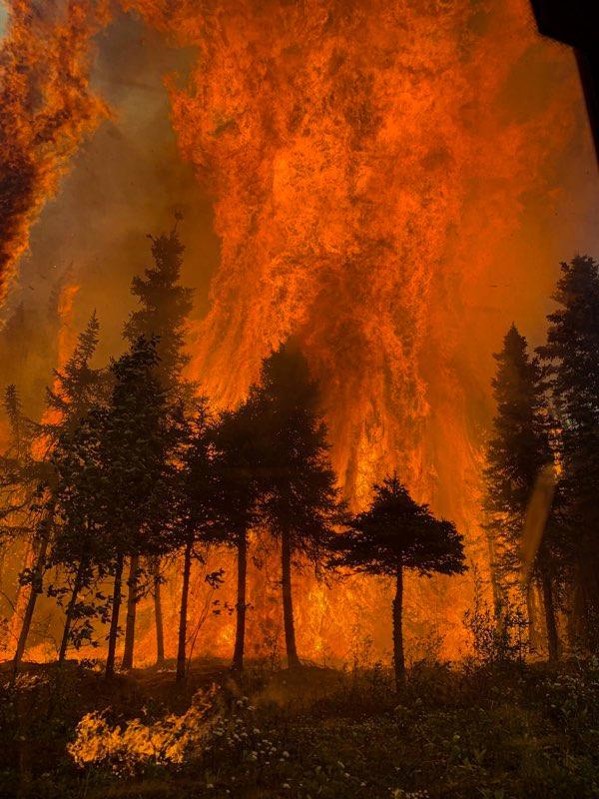Fire season forecasts aim to assist with resource allocation

A photo shows the Swan Lake fire on the Kenai Peninsula in 2019. A team of UAF researchers is working to forecast fire danger to help managers allocate firefighting resources.
Jeff Richardson
907-474-6284
Aug. 15, 2021
University of Alaska Fairbanks scientists are presenting their work at the American Geophysical Union’s fall meeting in New Orleans this week. This article is part of a series highlighting UAF research from the world’s largest Earth and space science meeting.
Fire season begins while snow is still on the ground in Alaska, starting with an annual March meeting when fire managers look at how the months ahead may unfold.
For each of the past two springs, University of Alaska Fairbanks researchers have added their own insight into the process. Using fire data from the past quarter-century and publicly available weather forecasts, they’ve offered forecasts for fire danger around the state. Such work could help fire managers decide how to allocate resources throughout Alaska.
“We’re trying to give them these seasonal forecasts as an extra tool to see if they’ll help,” said Cecilia Borries-Strigle, a graduate research assistant at UAF’s International Arctic Research Center and Geophysical Institute.
The UAF research team uses the data, which includes temperature and precipitation forecasts, to create a “buildup index” for dry surface fuels in 13 Alaska geographic zones with high fire activity. Their 2020 and 2021 forecasts nailed the fire danger in some areas and missed in others, including Interior Alaska.
Some research indicates that such forecasts seem to do better during high fire-danger years. A few relatively quiet wildfire seasons in Alaska could be skewing some short-term results, so researchers will likely wait for a larger sample size before making significant changes. Smaller calibrations to the forecasts could be part of the upcoming forecast for 2022, Borries-Strigle said.
“We’re learning about the models and also figuring out how to present that activity to fire managers in a way that’s useful to them,” she said.


